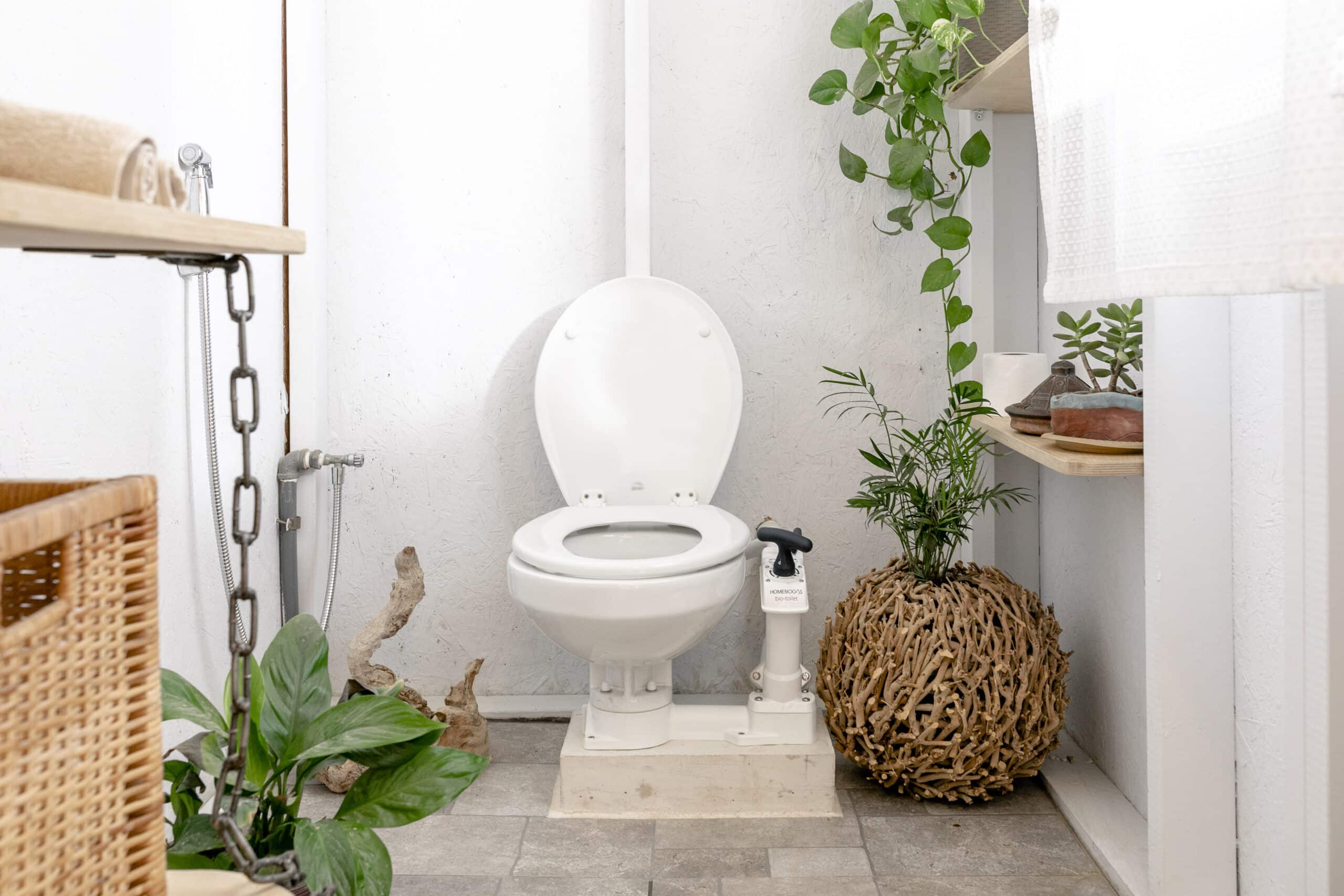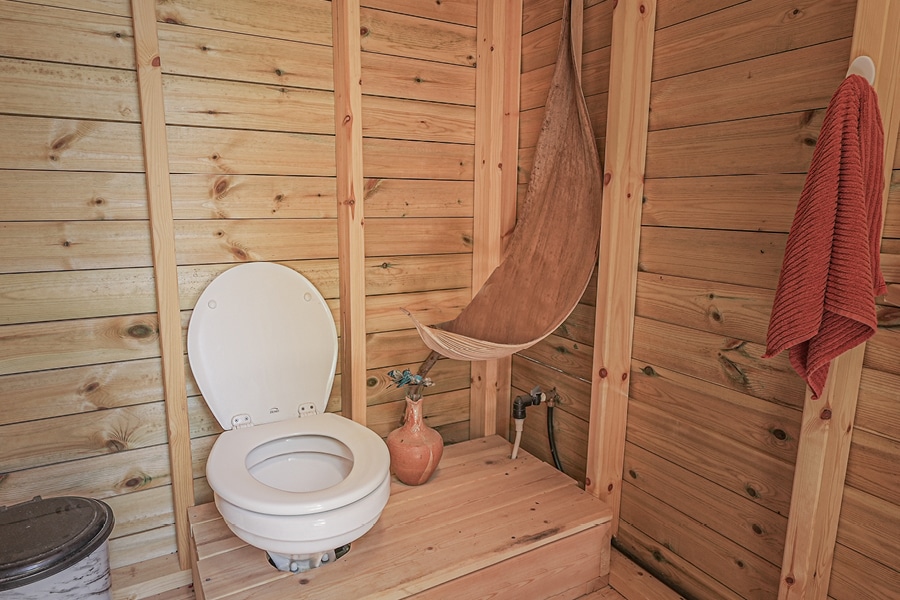
Why should you consider an outdoor toilet?
An outdoor comfort room can be a fantastic addition to your property. Think of the convenience that comes with having an outdoor toilet nearby while enjoying your outdoor space. With imagination and modern materials, you can create a unique and refreshing space that adds value to your backyard.
And there’s more to building an outside toilet:
- It eliminates the need for you and your guests to trek inside the house whenever you need to use the toilet. You can strategically place the structure close to the pool or entertainment area, making it easily accessible when you need it.
- Thanks to modern design and materials, you can customize the structure to match the aesthetics of your home and outdoor area, making it a seamless addition to your property.
- Lastly, an outdoor comfort room is a cost-effective option that reduces water usage, especially when you opt for a composting toilet.
Interested in learning more about the various eco-friendly outdoor toilet ideas for your property? Let’s look at some functional and sustainable outdoor toilet concepts.
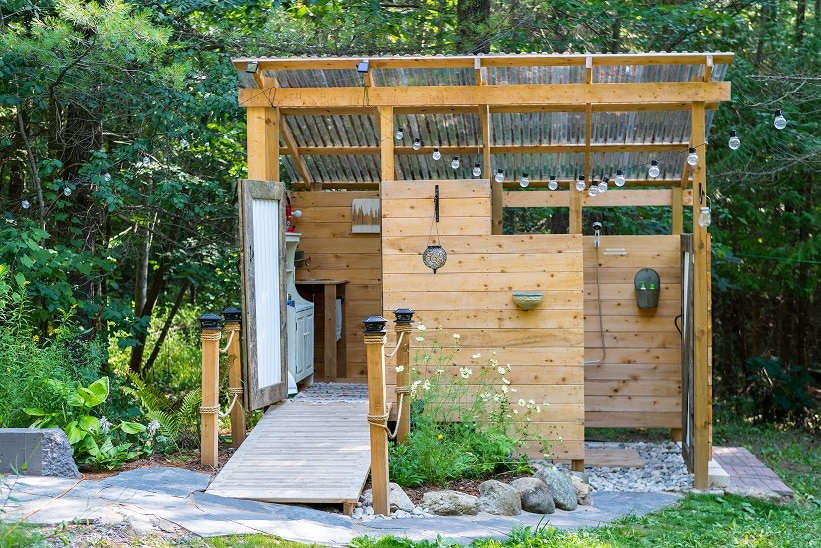
Types of outdoor toilets
When building an outdoor comfort room, you want to look further than a basic pit latrine. With so many products available today, you can do better than digging a hole in the ground and covering it with a platform.
In fact, you can opt for a fully equipped outdoor toilet designed to provide all the comfort of an indoor bathroom. It can feature elements like a composting toilet, running water, heating, and air conditioning for a year-round comfortable environment. And, if you don’t like the idea of composting your waste, you have alternatives like incinerating toilets or biogas digesters. Here are some ideas you can choose from.
7 outdoor toilet ideas
Basic outdoor toilet
The design of a basic outdoor toilet can vary depending on your location and needs. It’s usually a DIY construction made of plywood sides, a roof, and a door inside of which you keep a toilet bowl.
Basic outdoor toilets use either a pit or a septic tank, as they rarely connect to the sewage system.
Outdoor toilet with bathroom
In this case, the outdoor sanitation system includes a solid structure that hosts a toilet, sink, and shower. The toilet is typically a composting or standard flush toilet with a bowl and tank if you have a connection to the septic system.
The shower is often organized as a separate space with a showerhead, drain, and walls covered in waterproof materials. The bathroom may also have a mirror, shelves, and towel racks, depending on how much you plan to use it.
Portable outdoor toilet
A portable outdoor toilet is excellent when you need a waste management solution in your backyard but can’t afford to invest in a permanent structure. These toilets are designed to be lightweight and easy to move, making them perfect toilet ideas for camping or backyard parties.
They usually have a plastic or metal frame, a toilet seat on top, and a bucket underneath. You’ll likely use plastic bags to make the waste disposal easy and hygienic. Alternatively, you can install a portable toilet in a tent-like structure.
A biogas toilet kit
This sanitation system is more complex than a composting toilet, as it turns organic waste into biogas and nutrient-rich fertilizer. It usually includes a toilet seat, a biodigester, and a storage tank. It is simple to install and maintain, you don’t need to connect to a sewage line.
The toilet can be placed inside a dedicated structure for privacy and comfort, while the digester must stay outdoors. The produced biogas can then be used for cooking or heating, while the nutrient-rich fertilizer helps to enrich gardens and lawns.
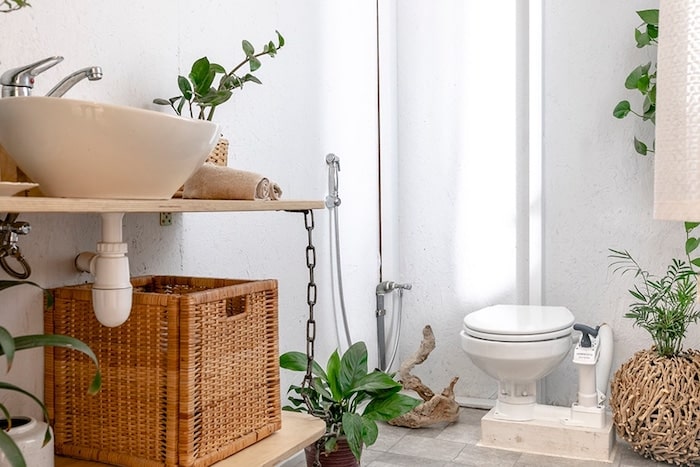
HomeBiogas Bio-toilet
Designed for the next generation of green innovation.
Outdoor toilet pavilion
An outdoor toilet pavilion provides a sanitary and private space for individuals to use the toilet close to a pool, but you can adapt it to match your backyard perfectly. A classic model has a roof, walls, floor, benches, a toilet, and a sink.
You can make it out of wood, metal, or plastic, depending on your resources and DIY abilities. The secret is to make the structure weatherproof to withstand different temperatures.
Composting outhouse shed
This free-standing structure is made of durable and weatherproof materials, such as wood, metal, or plastic, and usually contains a composting toilet and a sink. It has a roof, walls, a door to access the outhouse, and a vent system that allows fresh air to circulate. The floor must be impermeable to prevent the compost material from spreading into the soil before the decomposition is complete.
The composting toilet must communicate with a composting bin or container. Depending on the model, you might regularly add carbon-rich materials such as sawdust, wood chips, or straw to accelerate the decomposition process.
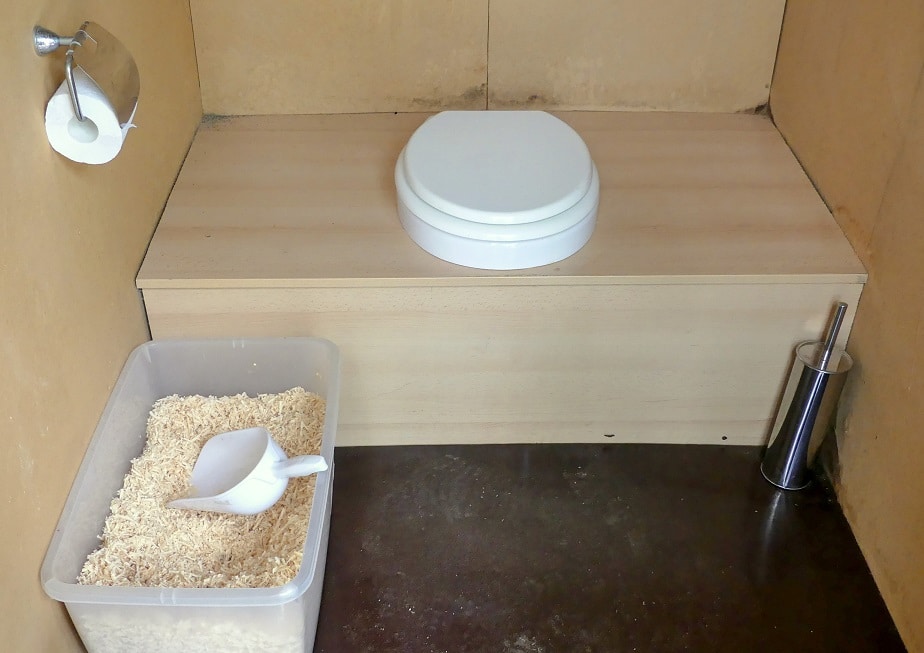
Incinerating toilet inside an outhouse
Alternatively, you can build an outhouse to host a self-contained unit that uses a combustion chamber to burn waste and turn it into ash. The incinerating toilet is odorless and requires no water or external sewage systems, making it a great option for areas without access to traditional sanitation.
How to choose the right outdoor composting toilet
Choosing the proper outdoor composting toilet requires careful consideration of your needs and preferences. Answers to the following questions can help you determine the type and size of the outdoor toilet you need:
- How many people will use it regularly?
- How much privacy are you looking for?
- Will you use the outhouse all year or during the warm season?
- Do you have access to running water and plumbing?
- What type of waste management system do you prefer?
- What budget do you have for this project?
- Are you willing to invest in additional features, like ventilation or odor control?
Take the time to research and compare different toilet types before choosing. Looking into toilet ideas for camping can also inspire you to build a comfortable and functional solution for your outdoor toilet.
How to maintain and clean an outdoor toilet
Cleaning an outdoor toilet is similar to regular indoor cleaning. That’s why you must keep a stock of toilet paper, sanitizers, and cleaning supplies in your outdoor comfort room. It’ll help you clean the toilet after each use and prevent germs, bacteria, and odors from taking over.
On the other hand, you must keep the area around the outdoor comfort room clean and free from debris and waste. Regularly sweep it and dispose of the trash to keep insects and pests away.
Lastly, check the condition of the toilet system regularly and make repairs or replacements as needed to ensure that it remains hygienic, functional, and comfortable to use.
HomeBiogas outdoor toilet composting solutions
The HomeBiogas Bio-toilet kit can be an excellent starting point for building a practical outdoor comfort room. It’s a fully functional toilet that is eco-friendly and easy to install in almost any outdoor setting. Depending on how much you want to invest in the structure, you can place the toilet in an outhouse shed, a pavilion, or even a tent.
The HomeBiogas system uses anaerobic digestion to turn waste into biogas. It includes a toilet bowl, a biodigester, filters, and pipes that transport the biogas to a special stove so you can use it for cooking.
This solution is convenient and comfortable, and it also reduces your environmental impact by giving you a sustainable waste management solution and a green energy source.
Final thoughts
An outdoor toilet can offer many benefits for homeowners, from convenience and privacy to an extra touch of comfort in a backyard. Simply pay attention to the right features and materials, and your outdoor toilet will enhance the value of your property.




